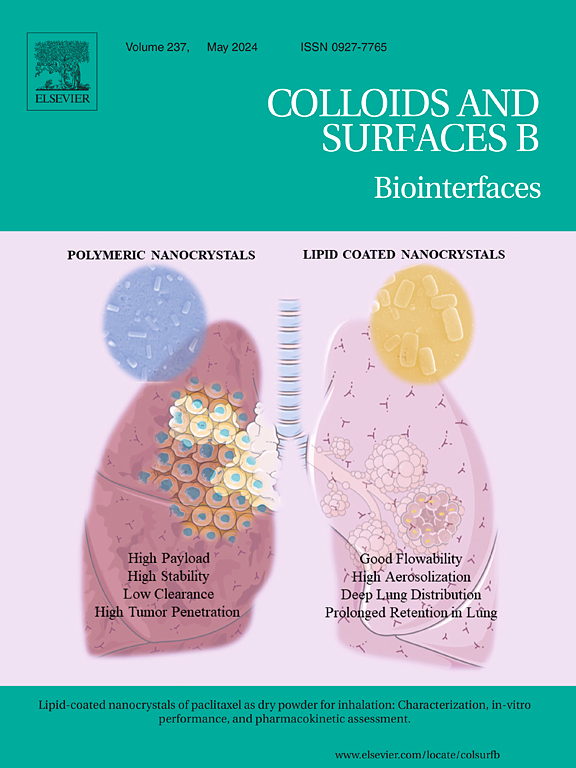Three-dimensional bioactive collagen scaffolds incorporated with titanate nanotubes for tissue regeneration
IF 5.4
2区 医学
Q1 BIOPHYSICS
引用次数: 0
Abstract
The development of three-dimensional (3D) biomimetic scaffolds for bone and soft tissue engineering has received increasing attention due to their ability to mimic the extracellular matrix (ECM) environment. This study presents the development and characterization of a 3D collagen matrix incorporating titanate nanotubes (TNT) aiming to improve cell migration and biocompatibility, with potential applications in bioink for bone and soft tissue regeneration. TNT were hydrothermally synthesized, and their properties were characterized using materials analysis techniques. After the incorporation of human fibroblasts into the collagen matrices with or without TNT, biological characterization was performed. The results showed that the incorporation of TNT significantly improved the migration efficiency and directionality compared to collagen-only matrices, which were more evident after long-term incubation. This indicates that the addition of TNT to the collagen matrixes improves the mechanical properties, promotes biocompatibility, and induces a superior environment for cell migration. These findings contribute to the development of new biomaterials for tissue engineering and demonstrate the potential of TNT as a key component of bioengineered biomaterials for bone and soft tissue regeneration.
求助全文
约1分钟内获得全文
求助全文
来源期刊

Colloids and Surfaces B: Biointerfaces
生物-材料科学:生物材料
CiteScore
11.10
自引率
3.40%
发文量
730
审稿时长
42 days
期刊介绍:
Colloids and Surfaces B: Biointerfaces is an international journal devoted to fundamental and applied research on colloid and interfacial phenomena in relation to systems of biological origin, having particular relevance to the medical, pharmaceutical, biotechnological, food and cosmetic fields.
Submissions that: (1) deal solely with biological phenomena and do not describe the physico-chemical or colloid-chemical background and/or mechanism of the phenomena, and (2) deal solely with colloid/interfacial phenomena and do not have appropriate biological content or relevance, are outside the scope of the journal and will not be considered for publication.
The journal publishes regular research papers, reviews, short communications and invited perspective articles, called BioInterface Perspectives. The BioInterface Perspective provide researchers the opportunity to review their own work, as well as provide insight into the work of others that inspired and influenced the author. Regular articles should have a maximum total length of 6,000 words. In addition, a (combined) maximum of 8 normal-sized figures and/or tables is allowed (so for instance 3 tables and 5 figures). For multiple-panel figures each set of two panels equates to one figure. Short communications should not exceed half of the above. It is required to give on the article cover page a short statistical summary of the article listing the total number of words and tables/figures.
 求助内容:
求助内容: 应助结果提醒方式:
应助结果提醒方式:


